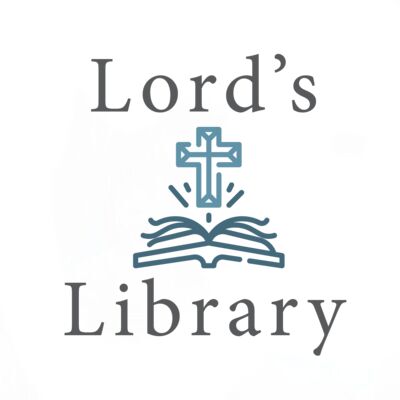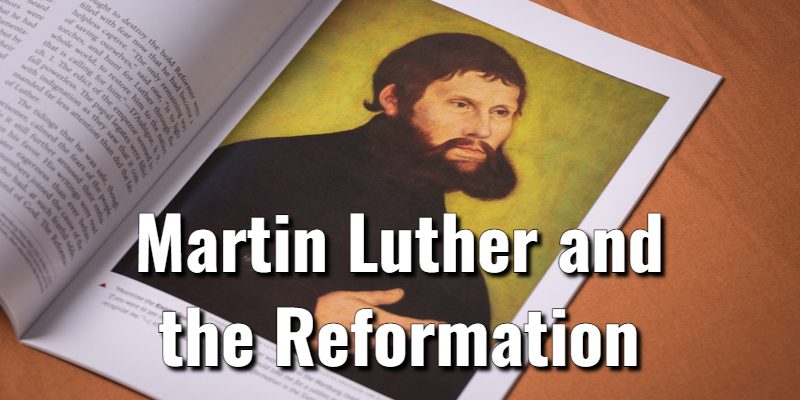Lord’s Library contributor Jared Helms offers an introduction to Martin Luther and the Reformation via a historical brief. Check out Jared’s YouTube channel and two blogs: A Light in the Darkness and Blind Faith Examples. Lord’s Library’s Ministry Leaders Series is a collection of contributed articles written by ministry leaders on key Christian topics.
 The German monk turned reformer Martin Luther is among the most pivotal figures in history. His work set the course for western civilization over centuries. A whole collection of different Christian denominations bear his name, and many others have benefitted from his labors. Whole books have been written on this remarkable life, here we provide a summary by way of introduction to the leading German reformer.
The German monk turned reformer Martin Luther is among the most pivotal figures in history. His work set the course for western civilization over centuries. A whole collection of different Christian denominations bear his name, and many others have benefitted from his labors. Whole books have been written on this remarkable life, here we provide a summary by way of introduction to the leading German reformer.
Martin Luther was born on the 10th of November 1483 to Hans and Margarethe Luther in the county of Mansfield in the Holy Roman Empire. The following year Hans moved the family to Mansfield where he was involved in the copper industry and civil affairs serving with the city council. Martin also had brothers and sisters. Hans desired Martin to become a lawyer and sent his eldest son to study at schools in Mansfield, then Magdeburg, and Eisenach where he would learn grammar, rhetoric, and logic.
At 17 Martin entered the University of Erfurt to study law but quickly abandoned that course in favor of philosophy and theology. During his time in Erfurt, he came under the influence of Bartholomaeus Arnoldi and Jodocus Trutfetter, who would teach him to question even the greatest thinkers. However, Martin soon became disillusioned with philosophy, finding that reason alone could not reveal God to man.
Martin Luther and the Reformation
While traveling back to University after visiting his parents in 1505 Luther was nearly struck by lightning. Fearful of death and divine judgment, Luther vowed to become a monk. He left University and entered St. Augustine’s Monastery in Erfurt. In the monastery, Martin gave himself to long periods of fasting and prayer, as well as pilgrimages and frequent confessions. In deep spiritual despair, Luther felt Christ to be only his jailer and judge.
Concerned that Luther was spending too much time in introspection, his superior at the monastery ordered Martin to pursue an academic career in the hope the work would distract the tortured soul. Luther would be ordained in Erfurt Cathedral by the Bishop of Brandenburg in 1507. In 1508 Luther began teaching theology at the University of Wittenberg. That same year he would receive a bachelor’s in Biblical studies, and a year later received a second bachelor’s degree in Peter Lombard’s “The Sentences” which was the main textbook in the study of theology at the time.
In 1512 Martin received his doctorate in theology, and a few days after was received fully into the theological faculty of the University of Wittenberg. Luther became chair of the department, a position he would retain throughout the rest of his life. It was at the University that Martin would meet Andreas Karlstadt and Philip Melanchthon who would later be comrades in the Reformation.
During this time Luther was able to study the Scriptures for himself and lectured on the Psalms, Hebrews, Romans, and Galatians. Through his study of these books of the Bible Luther became convinced that the Romish church had corrupted the doctrine of justification. Luther began to teach that grace was a free gift of God received through faith in Christ alone. This went against the Romish system of penance and sacraments, and would soon lead to direct conflict with the Romish church.
In 1516, Johann Tetzel, a Dominican friar was commissioned by the Archbishop of Mainz, to sell indulgences throughout Germany. Indulgences were special dispensations of grace which upon purchase would absolve one of sin whether living or dead. This particular indulgence had been announced to raise funds for the rebuilding of St. Peter’s Basilica in Rome, with the Archbishop obligated to raise the considerable sum of ten thousand ducats to pay off the debt of acquiring several benefices.

Pope Leo X had experience with reformers and was careful in his response. Over the next three years, a series of envoys were sent to dispute with Luther which only served to harden the reformer’s position. Elector Fredrick the wise of Saxony convinced Leo to have his subject Martin Luther examined at Augsburg during the imperial diet. For three days in 1518, the reformer defended his position against Cardinal Cajetan, denying outright that the Pope was above scripture.
In January of 1519, Papal Nuncio Karl von Miltitz, a relative of Fredrick the Wise, took a more conciliatory approach. He managed to obtain several concessions from Martin Luther, including a promise to remain quiet on the issues at hand so long as his opponents would do the same. However, in the June and July of that year, Johann Eck was determined to expose Luther’s doctrine as heresy and staged debates with Andreas Karlstadt at Leipzig.
Luther was invited to speak, making the bold assertion that Scripture did not confer infallibility on Pope or church council, for which he was branded as a new Jan Hus. Despite the tension with Rome, or perhaps because of it; Luther became a popular lecturer, and in 1519 published a commentary on Galatians and the Psalms.
Luther’s belief that salvation was fully the work of God, not only contradicted Romish dogma but also disrupted much of their power and influence. In 1520 Leo threatened ex-communication unless Luther would recant his beliefs. Luther burned the official notice publicly and was formally excommunicated on January 3rd, 1521.
In April of that year, Luther appeared at the Edict of Worms to defend his writings which had been banned. Under safe conduct obtained by Fredrick the Wise, Luther appeared before the emperor of the Holy Roman Empire. The electors were confronted with his writings and asked by Johann Eck if he was their author, and would stand by them. Luther readily affirmed his authorship but requested time to consider the second question. He was dismissed and required to return the next day to answer.
After a night of consultation with friends and much prayer, Martin delivered his answer which has become one of the most recognizable of his quotes:
“Unless I am convinced by the testimony of the Scriptures or by clear reason (for I do not trust either in the pope or in councils alone, since it is well known that they have often erred and contradicted themselves), I am bound by the Scriptures I have quoted and my conscience is captive to the Word of God. I cannot and will not recant anything, since it is neither safe nor right to go against conscience. May God help me. Amen.”
Luther refused to recant and was officially labeled an outlaw. Fredrick had Luther abducted on his journey back to Wittenberg and taken to Wartburg Castle for his protection. While there, Luther worked on a translation of the New Testament into German. Luther also published three essential works; “To the Christian Nobility of the German Nation,” “On the Babylonian Captivity of the Church,” and, “On the Freedom of a Christian.”
Wittenberg was becoming a hotbed for radicalism in Luther’s absence and was asked to return by the town council in hope of restoring order. Despite the dangers, Luther felt it was his duty to act returning to Wittenberg in March of 1522. Luther quickly quieted the unrest in the city through the preaching of core Christian virtues such as love and charity. When Luther was unable to travel outside of Wittenberg, other preachers took the opportunity to stir up revolt among the peasants. Luther was sympathetic to the plight of the poor peasants but denounced uprise, revolt, and war as unchristian.
In 1523 Martin would marry Katherina von Bora, a former nun whom he had helped to escape her covenant along with eleven others. The rather unexpected marriage would make clerical marriage an accepted practice in the Lutheran reformation. The couple would have six children.
Luther’s theology of justification found its full expression in 1525. “On the Bondage of the Will” was a direct response to Erasmus’ “Free Will” published a year prior. In the book, Luther argues effectively that man is in bondage to sin so that the will has no freedom to do good. It is the grace of God that alone may break the bonds of sin, and free the soul to live a life pleasing to God.
Luther would spend his remaining life organizing a new church. He continued to write and work on translating the Bible into German as well. Luther also wrote many hymns, the best known of which is “A Mighty Fortress is Our God.” His final years were spent in declining health, and due to his physical decline he became more irritable and his writings harsher.
Martin Luther died on February 18th, 1546 at age 62, and was buried in front of the pulpit at All Saint’s Church in Wittenberg. For those interested in learning more about Martin Luther Roland Bainton’s, “Here I Stand; a life of Martin Luther” is widely considered the best biography available. Erik Metaxas’ biography of the reformer is also quite good. We can also recommend the 1953 black and white film, “Martin Luther” as an enjoyable and fairly accurate dramatization of the reformer’s life.
Lord's Library participates in affiliate programs. We may make a small commission from products purchased through this resource.
- The Bible on Artificial Intelligence: What the Scriptures Say on AI - April 7, 2025
- Views From a Branch: The Problem of Labor and Capital - March 31, 2025
- Views From a Branch: The Dunning-Kruger Effect and You - March 30, 2025












